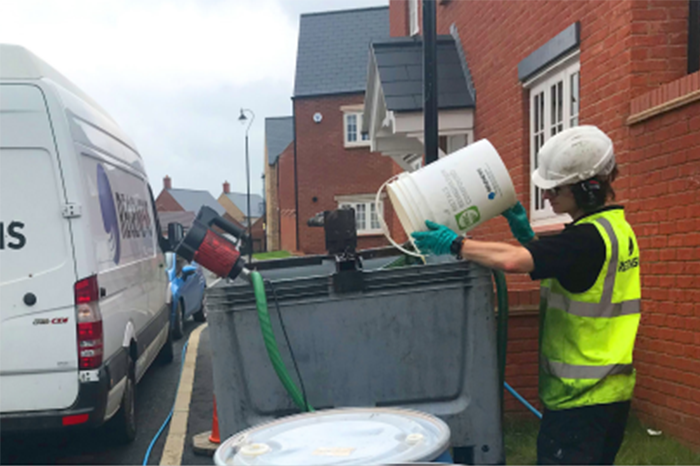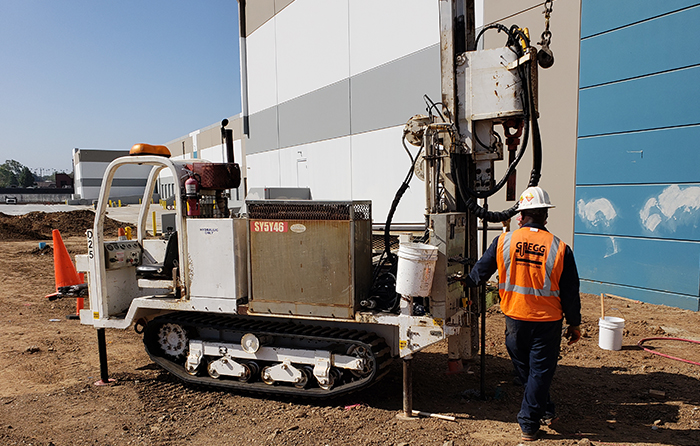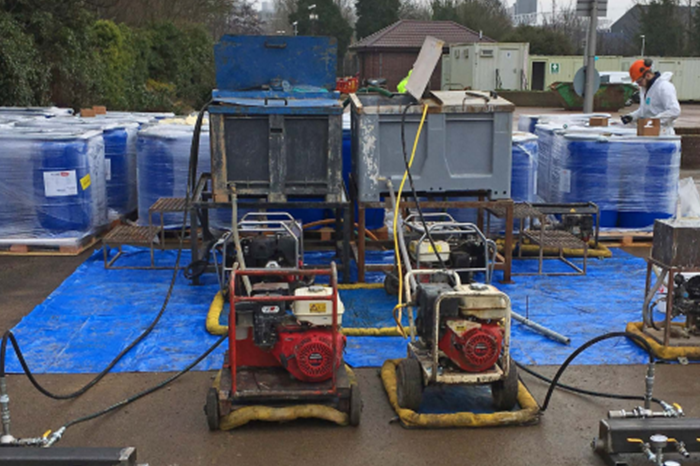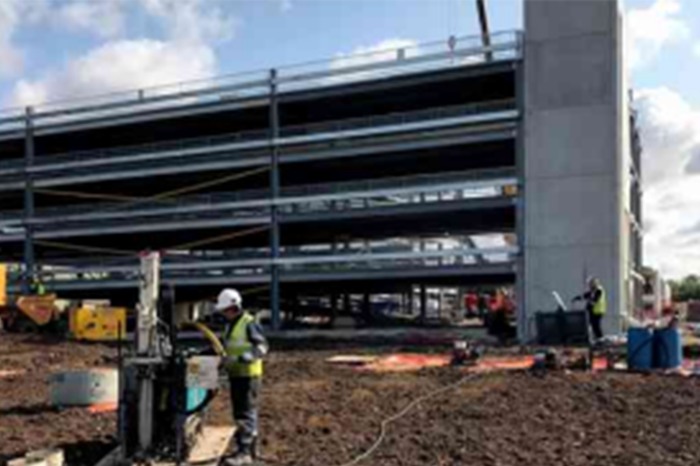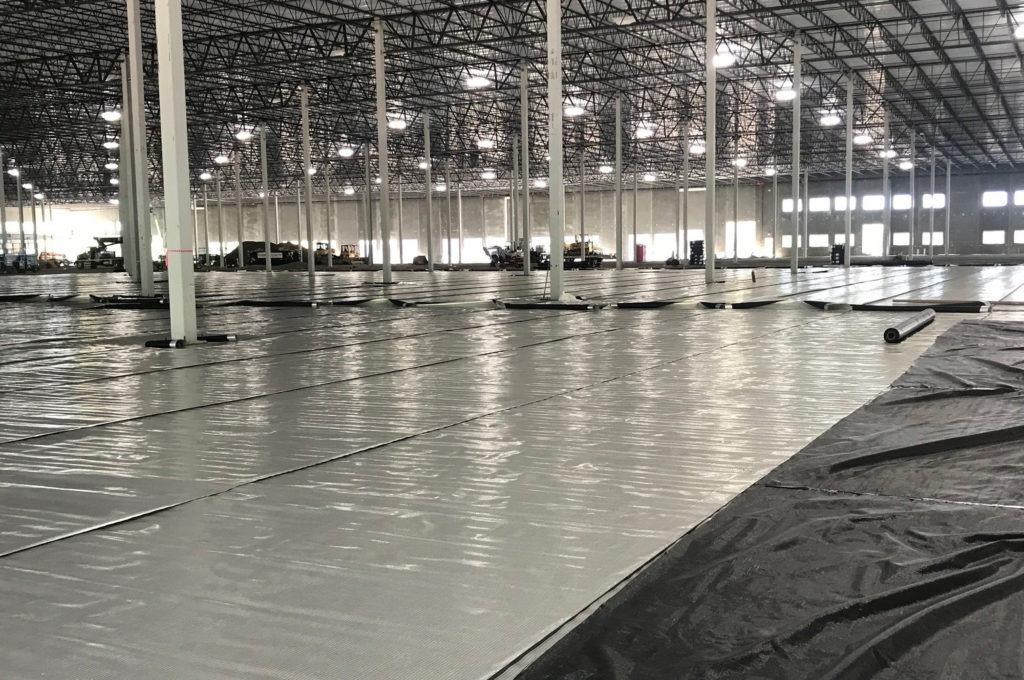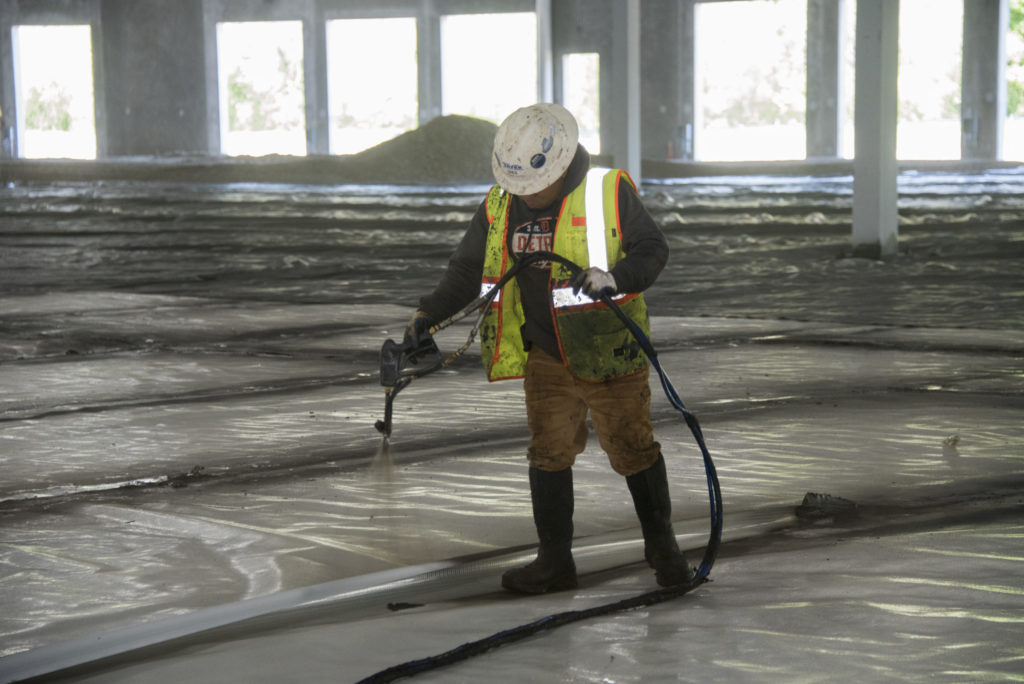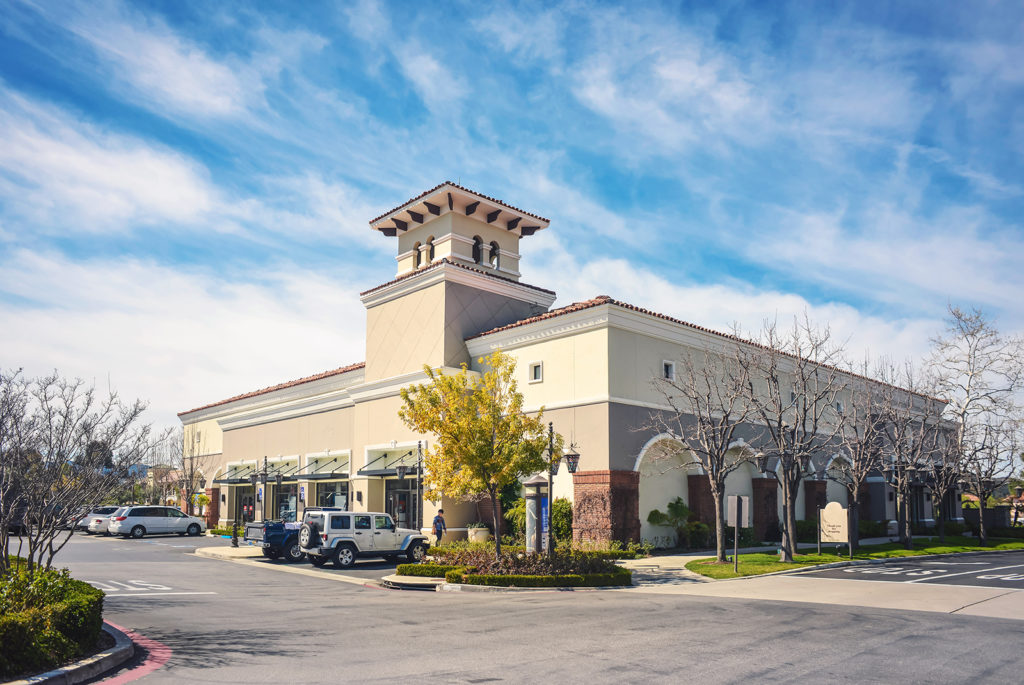Treatment of Cr(VI) and CHC Groundwater Contamination under a Residential Development
In Situ reagent barriers (HRC) treat contaminated groundwater in sandstone under a schoolRead More
PFAS Contaminants Reduced to Non-Detect
Case study highlights:
- All 14 PFAS compounds, including short chains, were reduced to ND within 6 weeks with maintained reductions through twelve months
- Successful pilot test resulted in full scale treatment
- Modeling performed by IRSL suggests that this reduction will be maintained for over 30 years without the need for further re-injection
This case study reviews a bulk storage facility located in the Middle East region that had released a mixed plume of petroleum hydrocarbons and Per and Polyfluoroalkyl substances (PFAS). PFAS constituents were effectively reduced to non-detect following the application of PlumeStop and have remained at these levels for twelve months post-application. The goal was to achieve mass reduction in all groundwater contaminants in order to mitigate the risk of contaminant migration to an offsite receptor. InSitu Remediation Services Ltd. (IRSL) was engaged to develop a remediation approach for the contaminated site. IRSL has had prior success treating a similar mixture of PFAS and petroleum contaminants at previous sites, using PlumeStop to sorb the contamination from the groundwater. IRSL worked alongside REGENESIS to design a pilot study to ensure the feasibility to treat the affected saline aquifer.
Remediation of TCE Plume Speeds Sale of Brownfield Site
Case study highlights:
- REGENESIS’ micron-scale ZVI is applied under low-pressure and does not require fracking
- In just one month following the application, monitoring shows successful reduction of the TCE plume
- Hargis + Associates and Gregg Drilling helped to implement an innovative drilling design which applied the remedial agent through ten points simultaneously at under 50 psi
This case study reviews a former manufacturing site in Fullerton, CA, where a trichloroethylene (TCE) plume contaminated the groundwater and prevented the sale of the brownfield site. REGENESIS designed an injection plan using micron-scale Zero Valent Iron (ZVI) due to its proven ability to effectively reduce contaminant levels within a subsurface environment. In order to complete the remediation and move forward with the sale, Hargis + Associates worked with REGENESIS to develop an in situ chemical reduction (ISCR) design to address the plume. Regulatory limits on pounds per square inch (psi) were enforced for all injections. REGENESIS, Hargis + Associates, and Gregg Drilling worked closely with the regulatory agency to ensure that the remediation and injection of the ZVI would be completed at a low pressure. After gaining regulatory approval, Gregg Drilling injected 50,000 gallons at less than 80 psi. Within a month, this low-pressure application yielded as much as 100% reductions in some zones.
Pesticides, VOCs and petroleum hydrocarbons remediated with a suite of in situ technologies
In Situ reagent barriers (HRC) treat contaminated groundwater in sandstone under a schoolRead More
Combined Amendment Approach Treats Chlorinated Solvents
Case study highlights:
- Combined remedy approach ensured effective remediation.
- FDEP Voluntary Cleanup program provided tax credits making the remediation and redevelopment possible.
- Remediation allowed the undeveloped block to be developed into a nine-story office building in a growing area of downtown Jacksonville.
This case study reviews a formerly undeveloped site in downtown Jacksonville that was impacted with chlorinated solvents in the groundwater and metal-impacted soils. To treat the chlorinated solvent groundwater plume, Terracon selected multiple technologies from REGENESIS, including PlumeStop, zero-valent iron (ZVI), Bio-Dechlor Inoculum Plus (BDI Plus), and Hydrogen Release Compound (HRC). The site required remediation prior to moving forward with development. Ryan Companies US, Inc. (Ryan) was under contract to purchase the property from the site owner and was seeking an expedited closure of the site prior to completion of construction. Ryan plans to develop the site with a nine-story office building and an associated nine-level parking deck. Site rehabilitation through remediation and regulatory closure is being sought through Florida Department of Environmental Protection (FDEP) voluntary cleanup. Environmental engineering and consulting firm Terracon evaluated a variety of remedial technologies as well as existing site conditions to determine the most appropriate application for the site.
Combined approach to remediate chlorinated solvents in Cambridge, UK
In Situ reagent barriers (HRC) treat contaminated groundwater in sandstone under a schoolRead More
Retro-Coat Utilized to Prevent Harmful TCE and Chloroform Vapor Intrusion
Case study highlights:
- The Retro-Coat barrier and Vapor-Vent system were incorporated into already planned renovations, saving the site owner time and money.
- Retro-Coat is resistant to both TCE and chloroform and is a wearing surface, rated for foot and forklift traffic.
- The Retro-Coat system layers cure quickly, reducing building downtime.
- The combination of Retro-Coat and Vapor-Vent was chosen as a remedial solution to mitigate the risk of harmful vapor intrusion.
This case study reviews a former industrial manufacturing facility in Greenville, SC that was purchased under a Voluntary Cleanup Contract and Brownfields agreement with the South Carolina Department of Health and Environmental Control (SCDHEC). Prior to renovation of the property, it was estimated that two VOCs, chloroform and TCE, had indoor air concentrations above EPA Industrial/Commercial Risk Based Screening Levels (RSL). Environmental consulting firm Bunnell Lammons Engineering recommended the installation of Retro‑Coat®, a vapor intrusion mitigation coating system, in conjunction with a passive sub-slab depressurization system (SSDS) comprised of Vapor‑Vent to protect the structure from vapor intrusion.
Construction Time Reduced with New Vapor Barrier System
Case study highlights:
- Liberty Park is being transformed from underutilized into a property that will bring jobs and growth to the community.
- MonoShield has the efficiency of a prefabricated barrier system and the flexibility and responsiveness of a spray-applied component for sealing penetrations, wall terminations, and seams.
- MonoShield is both time — and cost-efficient; it can be installed 30-40% faster than alternate plastic sheeting or HDPE systems.
- Cooperation among numerous stakeholders: The Michigan Department of Environment, Great Lakes, and Energy (EGLE), Ashley Capital, SME, Oliver Construction, Land Science, and S&H Waterproofing.
This case study reviews a brownfield site that posed multiple remediation challenges with a variety of known contaminants including arsenic, lead, and methane. To build on the site would require a unique foundation along with a vapor intrusion mitigation solution. Working with the developer Ashley Capital’s environmental consulting firm SME, Land Science recommended MonoShield, a new and innovative vapor intrusion mitigation system. This modified asphalt-nitrile vapor barrier system is designed to withstand even the toughest vapor intrusion conditions, ensuring a safe environment for years to come. SME chose to be the first to install MonoShield because it provided the best chemical resistance for this brownfield site and would also save the client time and money.
MonoShield™ Installed At Site Of Former Hazel Park Raceway
Case study highlights:
- With MonoShield offering a more reliable, cost-effective solution, the project was assured of meeting milestones and staying on time and on budget.
- Hazel Park welcomed the economic development and the promise of future jobs coming to the community through this key redevelopment project.
- The support of the city of Hazel Park, the state of Michigan, the Michigan Economic Development Corporation (MEDC), and the Michigan Department of Environment, Great Lakes, and Energy (EGLE) has made it possible to redevelop the Hazel Park Raceway.
- After a successful application at nearby Liberty Park, MonoShield was chosen as the best vapor intrusion mitigation solution for the Tri-County Commerce Building #2.
This case study reviews a site at the former Hazel Park Raceway, located in a designated Opportunity Zone, which was established by the US Federal Treasury to encourage businesses to invest in blighted properties by providing tax incentives. These tax incentives made the redevelopment of the Hazel Park Raceway possible. In the course of evaluating potential remedial options for the 650,000 square foot warehouse facility (Tri -County Commerce Building #2), consulting firm SME approached Land Science, a division of REGENESIS, to incorporate a vapor barrier system to address the harmful vapor intrusion.
Real Estate Transaction Requires Fast-Acting Treatment of PCE Contamination
Case study highlights:
- Due to the high-traffic and operational hours at this site, injections were performed from 10pm-7am in January.
- The speed in which Wilcox & Barton, Inc. addressed the contaminants was crucial for the site owners to achieve their goal of marketing the property for sale.
- Site engineers innovatively included heating systems, additional lighting, and warming facilities to ensure that the remedial agents stayed in their liquid form and to provide necessary amenities to the injection specialists.
- The combined remedy approach of PlumeStop, BDI Plus, and HRC was selected amongst other remediation strategies for its fast-acting capabilities and its effectiveness in completely dechlorinating contaminants.
This case study reviews a multi-tenant commercial plaza in the greater Boston area that required remediation of tetrachloroethylene (PCE) contamination in groundwater where a combined remedy approach used at delivered accelerated results using PlumeStop®, BDI Plus® and HRC®. Due to the owner’s objective to sell their property, a multi-tenant commercial plaza in the greater Boston area required remediation of tetrachloroethylene (PCE) contamination in groundwater associated with historical operations. Because contamination had been identified during due diligence, it was very important to implement a time-effective remediation strategy with minimal disruption to the various operating businesses. Wilcox & Barton, Inc. chose a combined remedial approach to treat the PCE contamination. This included liquid activated carbon (PlumeStop), an enriched, microbial consortium (BDI Plus), and an engineered, hydrogen release compound (HRC).

 Americas
Americas Europe
Europe Français
Français Deutsch
Deutsch Italiano
Italiano Español
Español